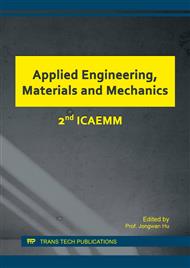p.77
p.83
p.89
p.94
p.99
p.109
p.114
p.119
p.125
Analytical Study on Microstructure and Mechanical Property in HAZ-Softened Weld Joint with High Heat Input of Low Carbon TMCP Steel
Abstract:
Three types of low-carbon TMCP steels with different strength of the same carbon equivalent were welded by the flux-cupper back for SAW(FCB) method in this work. The microstructure, hardness and tensile strength of the FCB welded joints were studied. Softening phenomenon occurs in the heat affected zone of low-carbon content and low carbon-equivalent TMCP EH36 steel after high heat input welding. The softened zone is mainly depended on the strength of the base metal (BM), which appears on the fine-grain zone and incomplete crystallize zone of BM with relative low strength, and on the coarse grain zone of BM with high strength. The ratio of the tensile strength between each FCB joint and BM is the same of 0.98 as the same carbon and carbon equivalent content of 0.5% and 0.315% of BM, which is almost independent of the strength of BM. The tensile strength of the incomplete crystallize zone depends on the strength of the BM, which results in the improved strength of the whole softened zone with the increasing strength of base metal.
Info:
Periodical:
Pages:
99-106
Citation:
Online since:
October 2017
Authors:
Keywords:
Price:
Сopyright:
© 2017 Trans Tech Publications Ltd. All Rights Reserved
Share:
Citation:


